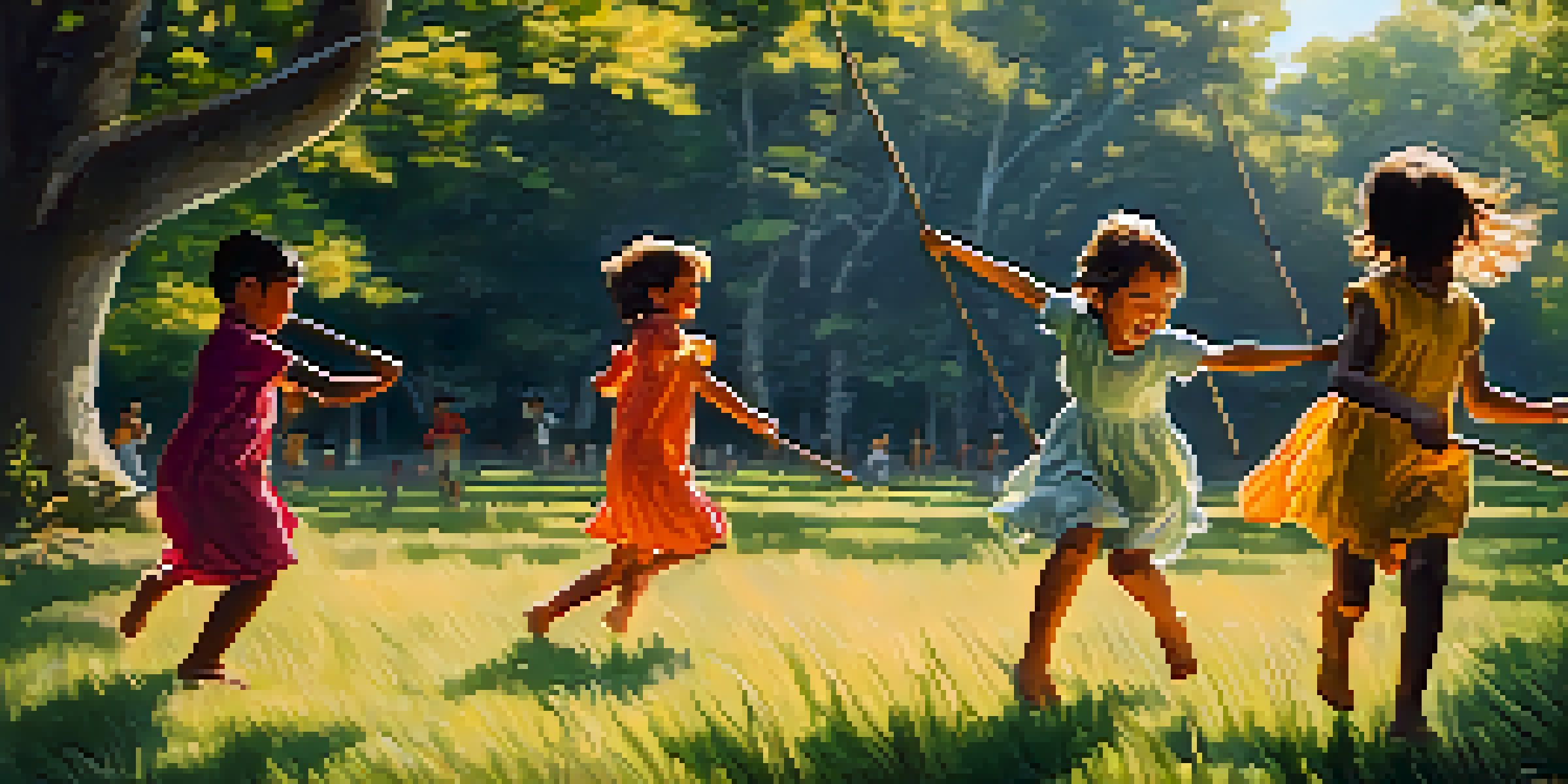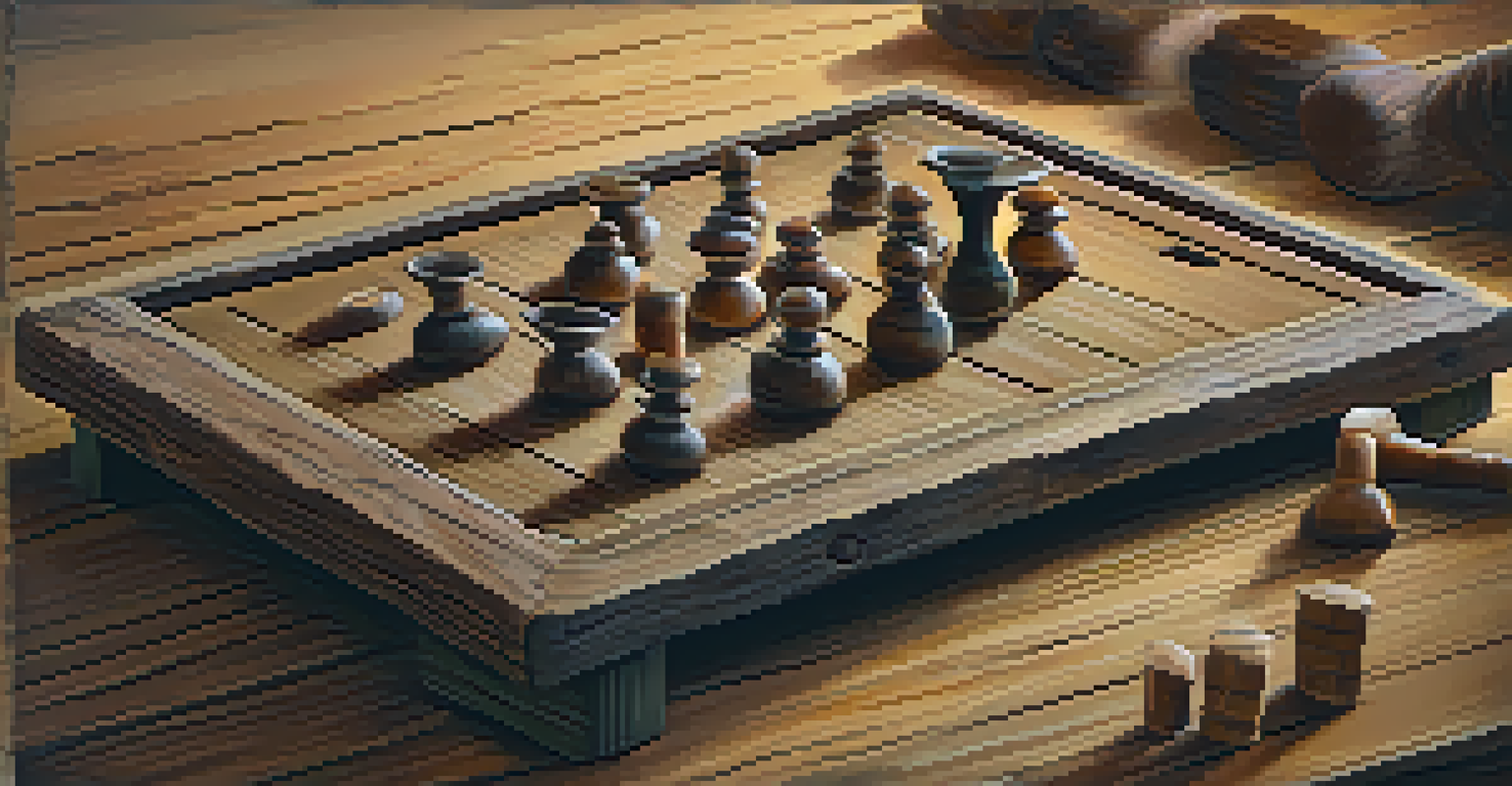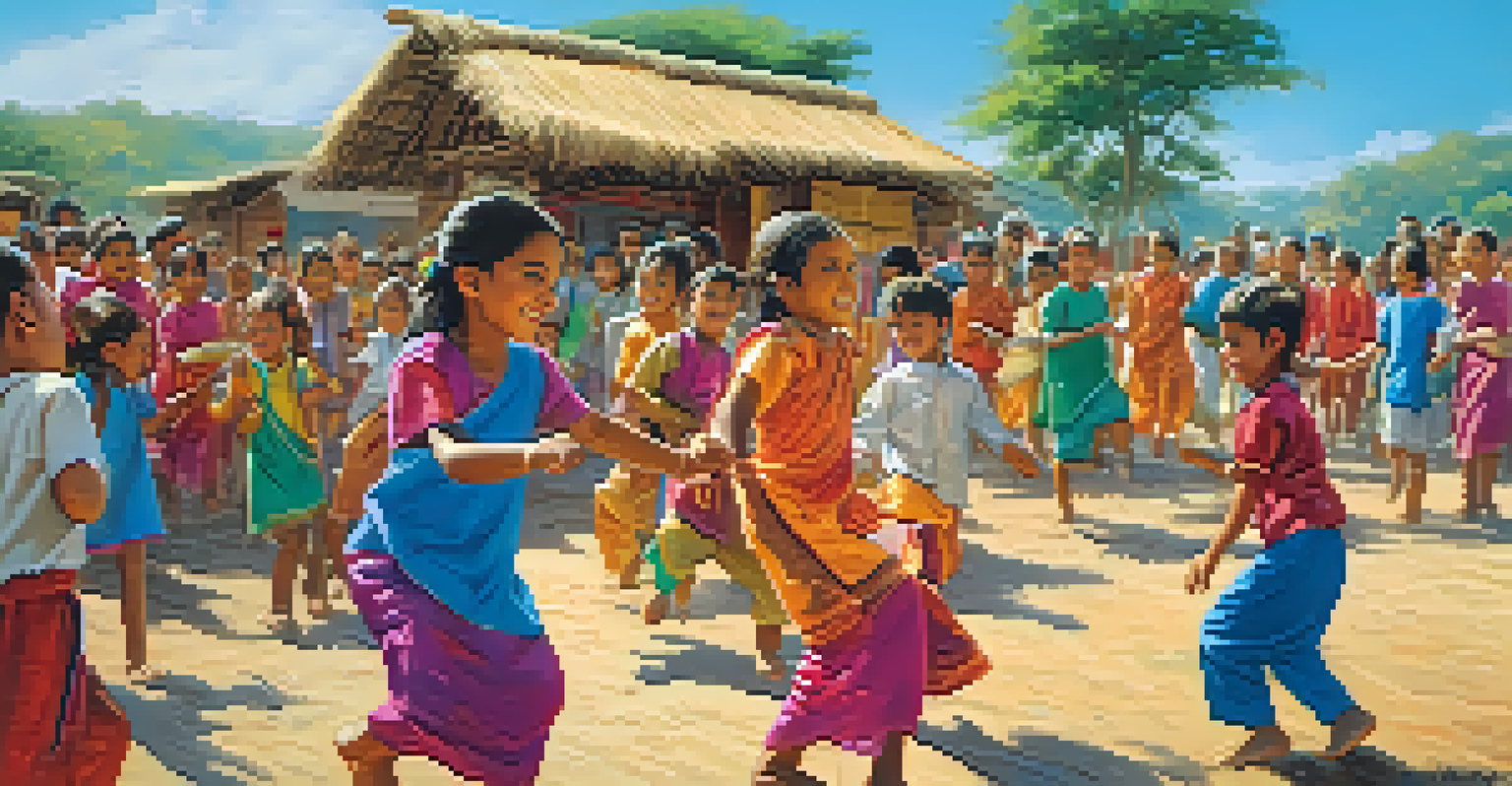Gilli-Danda: The Traditional Game of Skill and Strategy

Understanding the Basics of Gilli-Danda
Gilli-Danda is a traditional game that combines skill, strategy, and a bit of luck. The game typically involves two main pieces: the gilli, a small wooden peg, and the danda, a longer stick used to strike the gilli. The objective is to hit the gilli into the air and then attempt to hit it again as it comes down.
Games are the most elevated form of investigation.
Often played in open spaces, Gilli-Danda is best enjoyed in groups, making it a social activity that brings people together. It's a game that requires both physical coordination and tactical thinking, similar to baseball but with its own unique flair. Players often take turns, creating an engaging and competitive atmosphere.
The rules are simple, yet the gameplay can get quite intense, as players strategize their moves while trying to outsmart their opponents. It's a game that not only tests one’s physical abilities but also sharpens mental acuity, making it a perfect blend of fun and challenge.
The Cultural Significance of Gilli-Danda
Gilli-Danda is more than just a game; it holds deep cultural roots in many regions, especially in India and parts of Southeast Asia. Historically, it has been played by children in rural areas, fostering community bonds and cultural traditions. This game has been a staple of childhood for many, symbolizing carefree days and the joy of outdoor play.

The simplicity of Gilli-Danda allows it to be accessible to everyone, regardless of background or age. This inclusiveness is part of what makes it a cherished pastime, as children and adults alike can enjoy it together. It’s often played during festivals and gatherings, further emphasizing its role in social cohesion.
Gilli-Danda: A Traditional Game
Gilli-Danda is a skillful and strategic game that fosters social interaction and physical coordination among players.
Through generations, Gilli-Danda has managed to evolve while retaining its core essence. As modern technology takes over many aspects of entertainment, this traditional game serves as a reminder of simpler, more active times, encouraging players to step outside and engage with one another.
How to Play Gilli-Danda: A Step-by-Step Guide
To get started with Gilli-Danda, you'll need a flat surface and the two game pieces: the gilli and the danda. The first step is to find a suitable area, ideally a dirt patch or a grassy field, where players can run freely. Once the location is set, players can decide who goes first through a simple method like a coin toss.
Play is the highest form of research.
The player who goes first places the gilli on the ground and uses the danda to strike it, attempting to send it flying into the air. After striking, the player must run to a designated area while the others try to catch the gilli before it lands. If they succeed, the player who struck the gilli is 'out,' and play continues with the next player.
As the game progresses, players can add their own rules or variations, making each game unique. This adaptability not only keeps the game fresh but also allows players to unleash their creativity, ensuring that no two games of Gilli-Danda are ever the same.
Essential Skills Required for Gilli-Danda
Playing Gilli-Danda effectively requires a mix of physical and mental skills. Hand-eye coordination is paramount, as players must accurately strike the gilli while managing the timing of their hits. This aspect of the game helps develop reflexes and precision, which can be beneficial in various sports and activities.
Moreover, strategic thinking plays a crucial role in Gilli-Danda. Players must decide their best course of action based on their position and the behavior of their opponents. This tactical element encourages players to think critically and anticipate moves, enhancing their overall decision-making abilities.
Cultural Importance of Gilli-Danda
This game has deep cultural roots, especially in India, symbolizing community bonds and the joy of outdoor play.
Finally, teamwork is essential in Gilli-Danda, especially when played in larger groups. Players must communicate effectively and work together to strategize their plays and defend against opponents. This cooperation fosters camaraderie, making it not just a game of skill, but also a lesson in collaboration.
Gilli-Danda Variations Around the World
While Gilli-Danda is widely recognized in India, various cultures have their own versions of this engaging game. For instance, in some parts of Nepal, a similar game called 'Dandi Biyo' is played, which involves striking a target with a stick. These variations often come with unique rules and styles, reflecting the local traditions and customs.
In countries like Pakistan, Gilli-Danda has been embraced as a childhood favorite, with local adaptations that may involve different sizes of gilli and danda. This diversity showcases how a simple concept can evolve into numerous forms, each with its own cultural significance and community following.
Such variations not only highlight the creativity of people around the world but also emphasize the universal appeal of Gilli-Danda. No matter the name or the specific rules, the core essence of the game remains the same: a blend of skill, strategy, and shared joy.
The Benefits of Playing Gilli-Danda
Playing Gilli-Danda offers a multitude of benefits, particularly for children. The game promotes physical fitness, as it involves running, jumping, and striking, which help improve cardiovascular health and overall coordination. These physical activities are crucial for developing strength and agility in young players.
In addition to physical benefits, Gilli-Danda also enhances mental skills. The strategic elements of the game encourage players to think critically and make quick decisions under pressure. This mental engagement is important for cognitive development, providing kids with skills that extend beyond the playground.
Benefits of Playing Gilli-Danda
Playing Gilli-Danda promotes physical fitness, enhances mental skills, and fosters valuable social interactions among players.
Moreover, Gilli-Danda fosters social interaction, teaching players valuable lessons about teamwork and sportsmanship. As players collaborate and compete, they develop communication skills and learn how to handle both victory and defeat gracefully. This socialization contributes significantly to a child's emotional growth and resilience.
Preserving the Legacy of Gilli-Danda
As modern pastimes evolve, there’s a growing concern about preserving traditional games like Gilli-Danda. Initiatives are being taken in various communities to keep the spirit of the game alive, including organizing local tournaments and workshops for children. These events not only celebrate the game but also educate younger generations about its cultural importance.
Schools and community centers are also stepping in, incorporating Gilli-Danda into physical education programs. By introducing students to this traditional game, educators can cultivate an appreciation for cultural heritage while promoting physical activity. This effort helps bridge the gap between generations, ensuring that the game continues to flourish.

Ultimately, preserving Gilli-Danda is about more than just the game itself; it’s about maintaining the connections and values that come with it. By encouraging play and fostering community engagement, we can ensure that this cherished tradition remains a vibrant part of our cultural landscape for years to come.